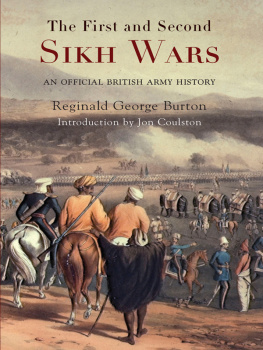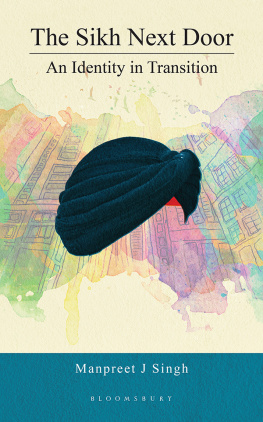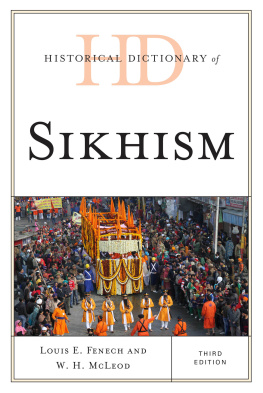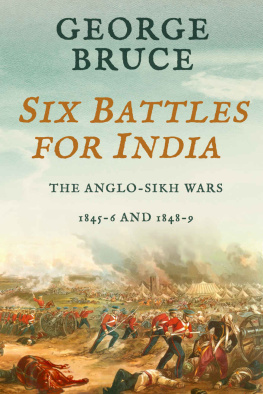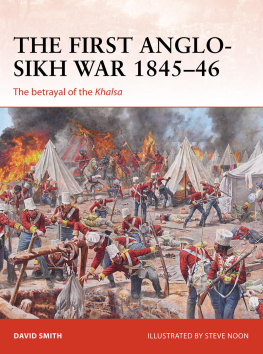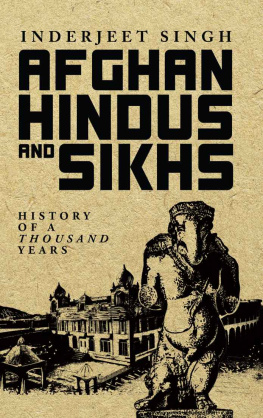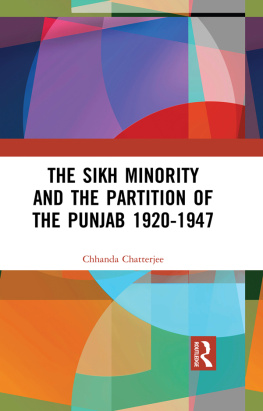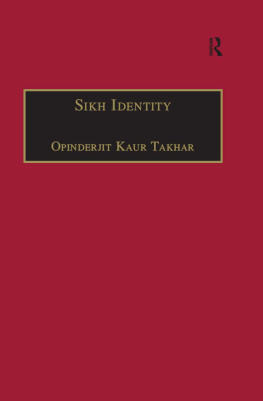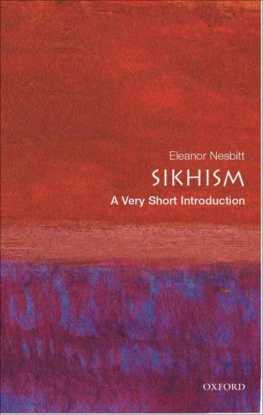THE
NIRANKARI
SIKHS
This is a new edition of Dr. Websters The Nirankari Sikhs (1979), which has been recognized as the single most important work on the history of Baba Dayal and his successors. It updates the earlier edition not only by dealing with the past forty years of Nirankari history but also by taking into account subsequent scholarship on the history of Sikhism, especially during the first half of the nineteenth century. Further it also provides two additional primary sources of nineteenth century Nirankari history along with the nine included in the earlier edition.
This new edition will be of value not only to those scholars interested in Nirankari history but also to those seeking a fuller understanding of the evolution of Sikh identity since the nineteenth century. Sikh identity has been a major issue for Nirankaris in recent decades because they have been confused with the Sant Nirankari Mandal which makes no claims to a Sikh identity. Nirankaris, like other Sikhs, base their beliefs and practices upon the Guru Granth Sahib and revere the ten Sikh gurus. For this reason they view themselves, and are considered by other Sikhs, to be minority group within Sikhism. They are distinguished from other Sikhs, most obviously in not fully embracing the Khalsa tradition of the Sikhs and in having a continuing hereditary line of human gurus. How such similarities and differences have affected their own, and the very nature of, Sikh identity over the past two centuries is an important part of this history.
John C.B. Webster holds degrees from Amherst College, Union Theological Seminary in New York City, Lucknow University, and the University of Pennsylvania. He taught history at Baring Union Christian College and Guru Nanak Dev University in the Punjab as well as at United Theological College in Bangalore. He is now retired and lives in the USA.
BY THE SAME AUTHOR
The Christian Community and Change in
Nineteenth Century North India
The Dalit Christians: A History
Studying History
Religion and Dalit Liberation:
An Examination of Perspectives
A Social History of Christianity:
North-West India since 1800
Historiography of Christianity in India
First published 2018
by Routledge
2 Park Square, Milton Park, Abingdon, Oxon OX14 4RN
and by Routledge
711 Third Avenue, New York, NY 10017
Routledge is an imprint of the Taylor & Francis Group, an informa business
2018 John C.B. Webster and Manohar Publishers & Distributors Press
The right of John C.B. Webster to be identified as author of this work has been asserted by him in accordance with sections 77 and 78 of the Copyright, Designs and Patents Act 1988.
All rights reserved. No part of this book may be reprinted or reproduced or utilised in any form or by any electronic, mechanical, or other means, now known or hereafter invented, including photocopying and recording, or in any information storage or retrieval system, without permission in writing from the publishers.
Trademark notice: Product or corporate names may be trademarks or registered trademarks, and are used only for identification and explanation without intent to infringe.
Print edition not for sale in South Asia (India, Sri Lanka, Nepal, Bangladesh, Afghanistan, Pakistan or Bhutan)
British Library Cataloguing in Publication Data
A catalogue record for this book is available from the British Library
Library of Congress Cataloging in Publication Data
A catalog record for this book has been requested
ISBN: 978-1-138-31723-9 (hbk)
ISBN: 978-0-429-45351-9 (ebk)
Typeset in Nalandabas 10.5/12.5
by Manohar, New Delhi 110 002
LIKE THE FIRST EDITION of this history published in 1979, this edition owes its origins to an invitation to write an encyclopaedia article on the Nirankari Sikhs. This time the invitation came from the editors of the Encyclopaedia of Sikhism published by E.J. Brill. In the course of preparing that article I discovered not only that my original history had stood the test of time remarkably well, but also that what other scholars had written about the nineteenth century Sikh context of Nirankari history provided grounds for some fresh thinking on my part. A second reason for a new edition is that a lot has happened to the Nirankaris since 1979 and their story needed to be updated. A third reason was that since then I discovered a new source of nineteenth century Nirankari history which is included here as and the accompanying notes on the text are the work of Dr. J.S. Grewal.
I have incurred some additional debts of gratitude in writing this edition. Baba Jagdarshan Singh, Gurdarshan Singh and Hardarshan Singh have been very hospitable and open to my many questions during visits to the Nirankari Darbar and afterwards. They have supplied me with some important documents, particularly from these past forty years, which have enabled me to bring this history up to date.
I have also benefitted greatly from the scholarly wisdom of several academic colleagues and friends whose assistance has proven to be invaluable. Dr. J.S. Grewal not only translated the Hukamnama mentioned earlier but also went over a draft of and gave me a quick on-the-spot translation of the excerpt of Hira Singh Dards Memoirs quoted at the end of that chapter. Drs. Indu Banga, Gurinder Singh Mann, Neelam Mansingh, and Karamjit K. Malhotra have also supplied questions, comments, suggestions and source materials to make this a better history. The officials of the Sant Nirankari Mandal in Delhi, and in particular Amrik Singh IAS Rtd. Convenor of their Central Planning Advisory Board, granted me an interview and supplied me with publications which helped to clarify the relationship between the Sant Nirankari Mandal and the Nirankari Sikhs.
Anubhav Preet Kaur Nirankari was an invaluable research assistant during the 2017 annual gathering. I wish to thank her and those people we interviewed together for their helping me gain a sense of the Nirankaris Today. Mr. and Mrs. Tulsi were my gracious hosts in Chandigarh during the recent Nirankari annual gathering and I thank them for opening their home to me.
My wife, Penny, has gone through the entire manuscript and offered her suggestions to make my writing clearer for the intelligent non-specialist reader. In addition, she has used her computer skills, so superior to mine, to prepare the finished manuscript for the publisher. I would like to extend the dedication of the original dedication of this book to include all those Punjabis who have, through their friendship, contributed so much to my education not just as a scholar but also as a human being.


